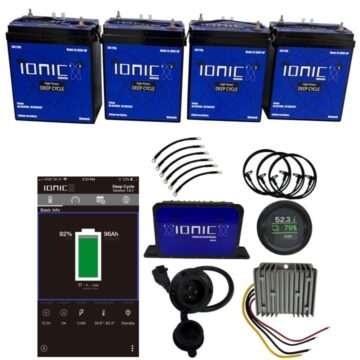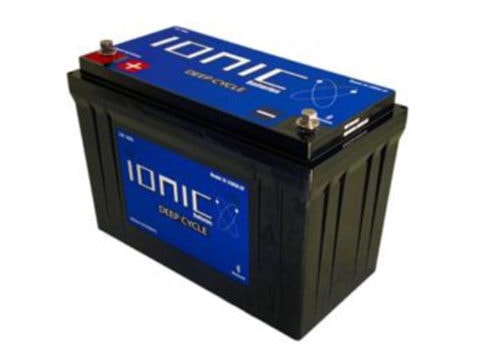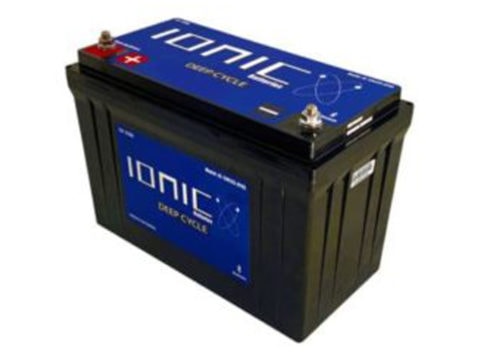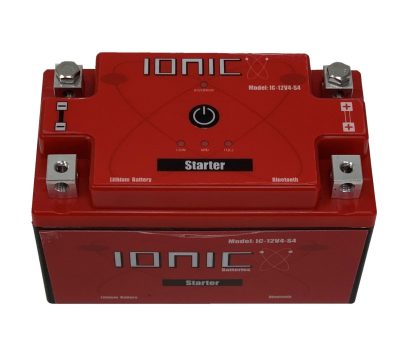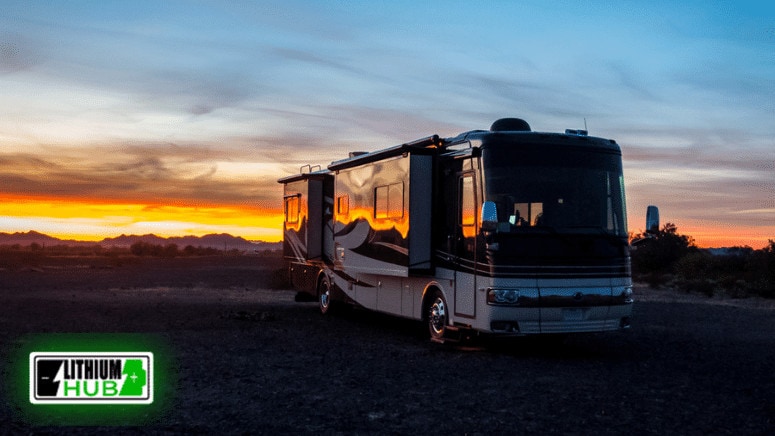Considering golf cart lithium battery conversion? Here’s a little “putt” to get you going in the right direction.
In this post, we’ll tell you why a lithium upgrade is worth its weight in gold. (Make that quadruple its weight since lithium batteries are so light!)
Then we’ll explain how to go about the switch. Hint: It’s easier than you thought.
Golf Cart Lithium Battery Conversion: Is it time?
The most obvious reason for getting new batteries is that your old ones have kicked the bucket.
(If it happened on golf day, you probably wanted to kick a real bucket!)
But dead batteries aren’t the only reason for an upgrade. And you don’t want to wait until they’re completely lifeless to replace them.
A golf cart lithium battery conversion could be in your future if you identify with any of the statements below:
Your batteries are damaged.
One of the major downsides of lead acid batteries is they’re prone to damage. Any damage means they’re on their way out. It’s going to affect performance, and it’ll cut your battery’s life short. Red flags include:
- Corrosion on the terminals.
- Wavy lead plates (inside the battery).
- The liquid inside looks cloudy.
- Warped battery case.
You notice your battery’s capacity is going down.
Visual signs aren’t the only type of warning that it’s time to replace your batteries. You might notice that you aren’t getting as much mileage as you used to. You’ve charged the battery completely, but you’re running out of juice much quicker than you expect. Those are signs of lost battery capacity.
You’re tired of battery babysitting and maintenance.
Taking care of a lead acid battery can be quite a chore. Especially when you compare it to lithium battery maintenance, which is nil.
With lithium batteries, there’s no “watering” or special treatment. They’re safe for indoor storage and won’t leak toxic chemicals. They also provide peace of mind by displaying important data, like how much charge you have left. (You can access this information on your smartphone when you connect it to your battery via Bluetooth).
You want better performance out of your cart.
Does a golf cart lithium battery conversion boost performance? You bet! Here’s why:
- Lithium doesn’t suffer from voltage sag. You get the same amount of power whether your battery capacity is at 100% or 50%.
- Lithium’s light weight lets you drive faster and maneuver with ease. No more crawling up hills.
- Less weight also means more space for people and gear.
- High discharge current: with lithium, you can get up to 500A discharge on one battery. You can put batteries in parallel to achieve an even higher discharge current.
- Lithium charges 5x faster. Your cart will be ready when you are!
- Lithium GC2 batteries have a 99% charge efficiency, compared to lead acid’s 85%
Did you enjoy this post? You’ll probably like this one too: How Long Does a Golf Cart Battery Last?

Golf Cart Lithium Battery Conversion Step-By-Step
- Choose the right battery voltage and capacity for your new batteries. The battery’s voltage must match the voltage requirement of the cart. You can get either 36-volt or 48-volt lithium GC2 batteries. Each provides 27 Ah (amp hours.) If you want a battery pack with more mileage, you can connect 2 to 6 batteries in parallel.
- Disconnect your old batteries.
- Remove any mounting straps and take your old batteries out.
- Clean the battery tray well.
- Check for signs of corrosion on the main cables. Replace them if necessary.
- Set your new batteries in the tray. Our lithium batteries are drop-in-ready. That means they can fit into your golf cart’s existing battery compartments. There’s no need to make adjustments.
- Strap the batteries in place with mounting straps/brackets.
- Be sure to install your lithium batteries in parallel (cables go positive to positive).

What Else Do I Need When Converting My Cart to Lithium?
You’ve installed your lithium batteries. Is it time to hit the golf course? Not so fast. You have to charge them first. But you can’t use any old charger – you need a charger that’s compatible with LiFePO4 lithium.
Many lead acid chargers aren’t compatible because they don’t put out the right amount of volts. The charger voltage should always match the battery voltage or less. Lithium requires an output of 14.2 to 14.6 volts.
Also, consider the amperage of your charger. Too low, and you’ll get a snail’s pace charge. Too fast, and you risk chipping away at your battery’s longevity.
Check out our handy charger recommendation chart to get the charger that’s right for your battery system.
Need batteries for your golf cart? Shop here! Need a lithium battery for your lawn mower instead? Go here.



